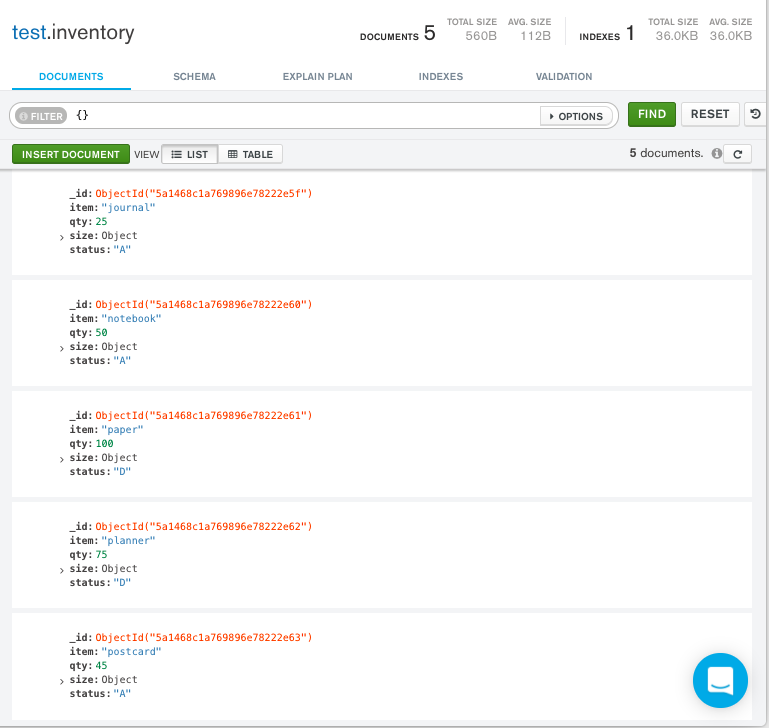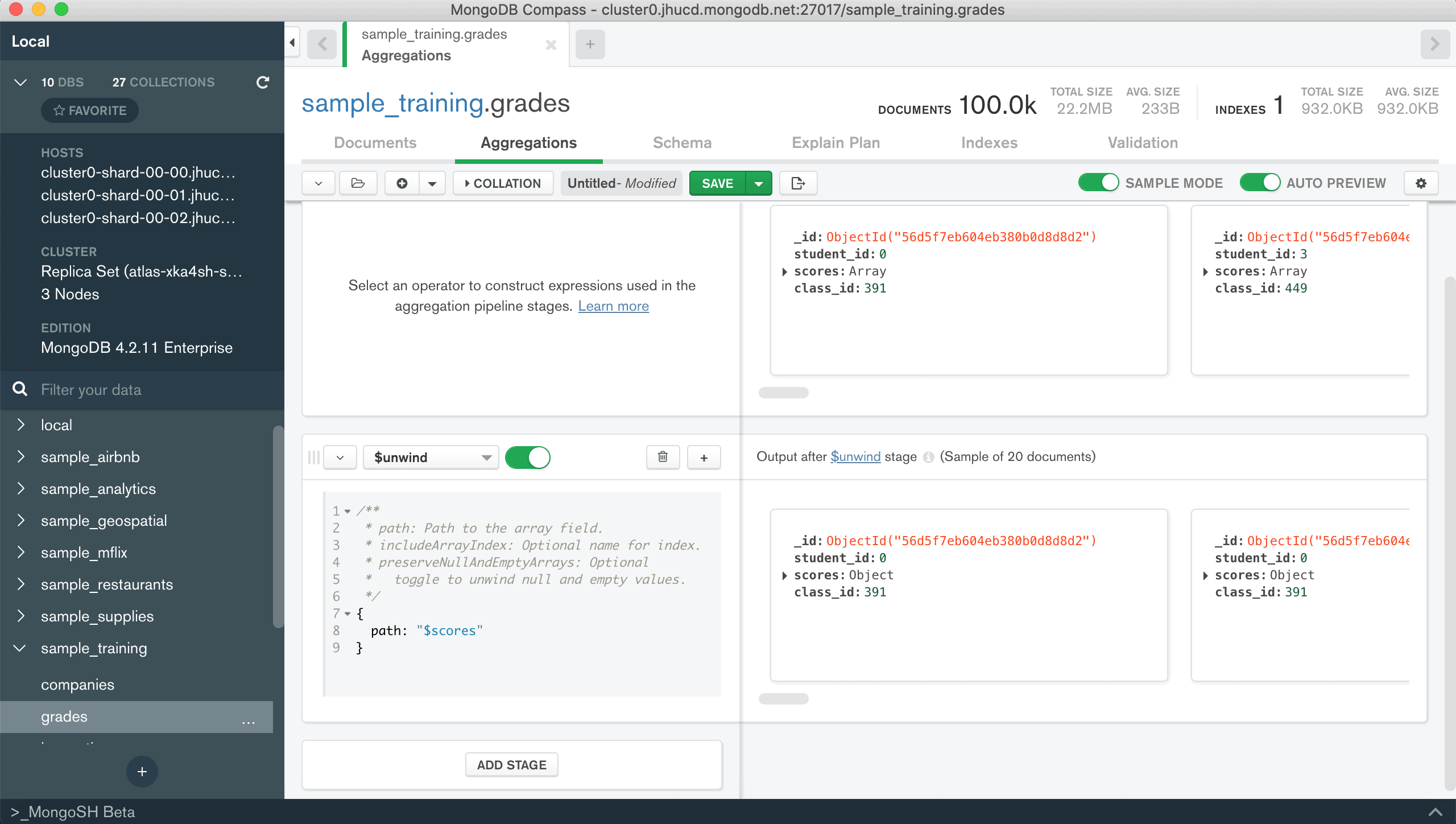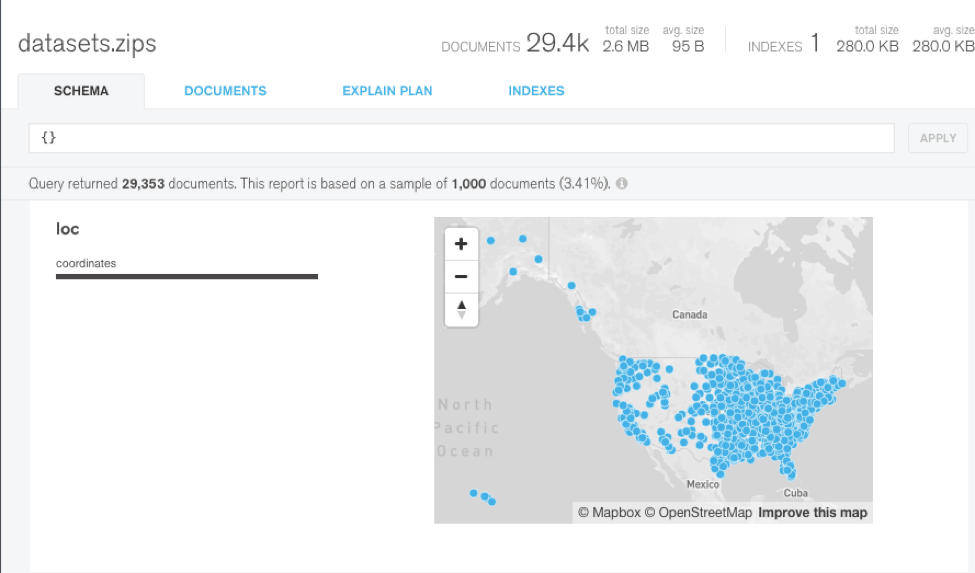
In the following examples used in this article, the find() method returns all documents that match the query. For example, to limit the amount of data MongoDB sends to applications, you can include a projection document to specify or restrict fields to return.Ī projection can explicitly include several fields. It is the most widely used NoSQL database because it offers a comprehensive query language and universal and easy data access. In addition, MongoDB is also very successful at processing large volumes of data. MongoDB is an unstructured database management system that stores data in the form of documents. Select Single or Multiple Fields for All Documents in a MongoDB Collection the following image shows shows the compound query built by selecting a. In this article, you will learn to select single or multiple fields for all documents in a MongoDB collection by performing basic query operations through projection. Can we export aggregated data from MongoDB compass Aggregation section after. Since it will require you to collect or request the necessary data from the database to conduct analysis, you must choose the right tool to query the data. Use the Projection Method to Select Single or Multiple Fields for All Documents in a MongoDB Collectionĭata is produced at an unprecedented pace now following the global spread of the internet.Select Single or Multiple Fields for All Documents in a MongoDB Collection.The $let aggregation is used to bind the variables to a results object for simpler output.
#Mongodb compass query select software
Matches documents that satisfy a JavaScript expression.įind documents that match the following JSON schema in the promo collection. MongoBD Compass is the standalone software provided by MongoDB to manage and query MongoDB’s NoSQL databases. The search can only be performed if the field is indexed with a text index. Perform a text search on the indicated field. Select documents that match the given regular expression. Matches documents where a given field’s value is equal to the remainder after being divided by a specified value. Validate the document according to the given JSON schema. Here is a list of common evaluation operators in MongoDB. We are only looking at the basic functionality of these operators as each of these operators can be considered an advanced MongoDB functionality.


The MongoDB evaluation operators can evaluate the overall data structure or individual field in a document. In this example, we retrieve the document with the exact _id value “LS0009100”. Matches none of the values specified in an array. You can glance through databases, collections and individual documents, interactively create queries, manipulate existing documents, and design aggregation pipelines through a. Matches values that are not equal to the given value. With MongoDB Compass, sometimes shortened to Compass, you can access most of the features the MongoDB database engine offers through an intuitive visual display. Matches if values are less or equal to the given value. Matches if values are greater or equal to the given value. Matches if values are less than the given value. Matches if values are greater than the given value. Matches values that are equal to the given value. The following table contains the common comparison operators. MongoDB comparison operators can be used to compare values in a document. Collections: employees, inventory, payments, promo.

(We won’t touch on them all, there are so many.) We’ll use the following dataset with the find() function to demonstrate each operator’s functionality. Now, let’s look at commonly used operators. MongoDB operators can be used with any supported MongoDB command. MongoDB offers the following query operator types: The query operators enhance the functionality of MongoDB by allowing developers to create complex queries to interact with data sets that match their applications. Operators are special symbols or keywords that inform a compiler or an interpreter to carry out mathematical or logical operations. Otherwise, Compass shows the entire result set. click to enlarge Note For query result sets larger than 1000 documents, Compass shows a sampling of the results. MongoDB offers different types of operators that can be used to interact with the database. Click Find to run the query and view the updated results. Use the right-hand menu to navigate.) What are MongoDB operators? (This article is part of our MongoDB Guide. We’ll explain what they do, then share examples so you can see how they work. In this article, we will take a look at the most commonly used query operators.



 0 kommentar(er)
0 kommentar(er)
